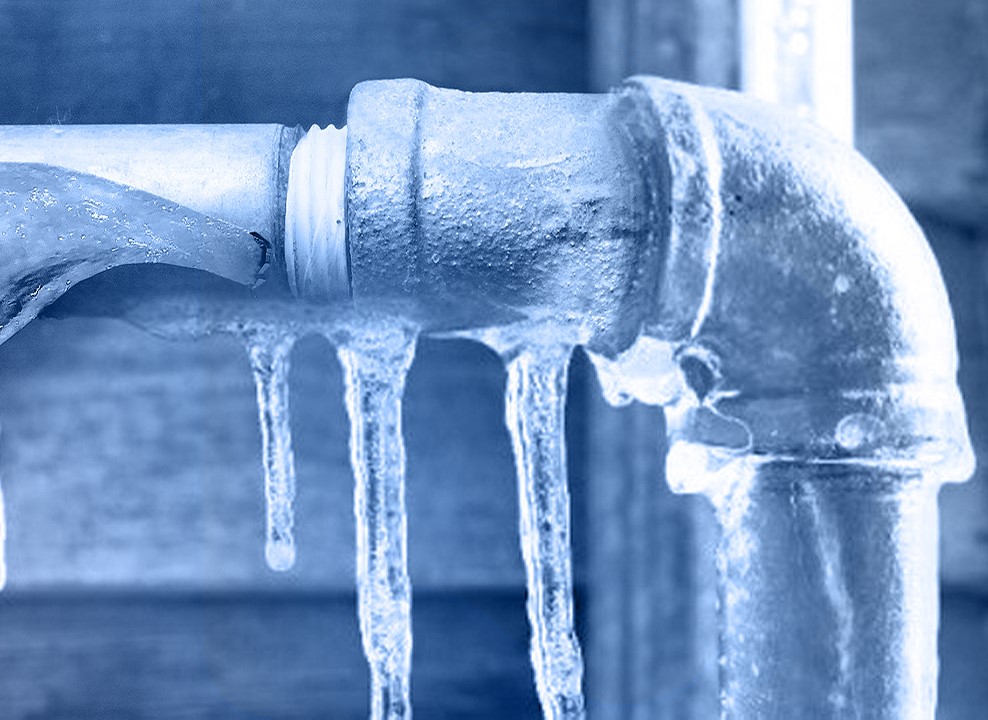Avoiding Frozen Pipes in Winter: Critical Strategies
Avoiding Frozen Pipes in Winter: Critical Strategies
Blog Article
How do you actually feel in relation to Prevent Frozen Pipes ?

Winter can wreak havoc on your plumbing, particularly by freezing pipes. Right here's exactly how to stop it from occurring and what to do if it does.
Introduction
As temperature levels decline, the risk of icy pipelines rises, potentially leading to costly repair services and water damages. Recognizing just how to prevent icy pipes is essential for house owners in cool climates.
Prevention Tips
Insulating vulnerable pipes
Wrap pipes in insulation sleeves or use heat tape to protect them from freezing temperature levels. Focus on pipelines in unheated or exterior areas of the home.
Heating techniques
Maintain indoor spaces appropriately heated up, particularly locations with pipes. Open up cupboard doors to permit warm air to flow around pipes under sinks.
How to identify frozen pipelines
Seek reduced water flow from taps, uncommon smells or noises from pipelines, and visible frost on exposed pipelines.
Long-Term Solutions
Structural adjustments
Consider rerouting pipelines away from outside wall surfaces or unheated locations. Add added insulation to attics, basements, and crawl spaces.
Updating insulation
Invest in high-grade insulation for pipes, attic rooms, and walls. Appropriate insulation assists keep regular temperature levels and reduces the risk of icy pipelines.
Shielding Exterior Pipes
Yard pipes and outside faucets
Separate and drain garden tubes before wintertime. Install frost-proof faucets or cover outdoor taps with protected caps.
Comprehending Icy Pipelines
What creates pipelines to freeze?
Pipes freeze when revealed to temperature levels listed below 32 ° F (0 ° C) for prolonged periods. As water inside the pipelines freezes, it expands, taxing the pipe walls and possibly creating them to burst.
Risks and damages
Icy pipes can result in water interruptions, building damage, and pricey repair work. Ruptured pipelines can flooding homes and cause considerable structural damages.
Signs of Frozen Water Lines
Identifying frozen pipes early can avoid them from bursting.
What to Do If Your Pipes Freeze
Immediate activities to take
If you suspect frozen pipes, keep faucets open up to ease stress as the ice melts. Use a hairdryer or towels taken in warm water to thaw pipes slowly.
Conclusion
Preventing frozen pipes needs aggressive actions and quick responses. By comprehending the causes, signs, and safety nets, home owners can secure their pipes during winter.
5 Ways to Prevent Frozen Pipes
Drain Outdoor Faucets and Disconnect Hoses
First, close the shut-off valve that controls the flow of water in the pipe to your outdoor faucet. Then, head outside to disconnect and drain your hose and open the outdoor faucet to allow the water to completely drain out of the line. Turn off the faucet when done. Finally, head back to the shut-off valve and drain the remaining water inside the pipe into a bucket or container. Additionally, if you have a home irrigation system, you should consider hiring an expert to clear the system of water each year.
Insulate Pipes
One of the best and most cost-effective methods for preventing frozen water pipes is to wrap your pipes with insulation. This is especially important for areas in your home that aren’t exposed to heat, such as an attic. We suggest using foam sleeves, which can typically be found at your local hardware store.
Keep Heat Running at 65
Your pipes are located inside your walls, and the temperature there is much colder than the rest of the house. To prevent your pipes from freezing, The Insurance Information Institute suggests that you keep your home heated to at least 65 degrees, even when traveling. You may want to invest in smart devices that can keep an eye on the temperature in your home while you’re away.
Leave Water Dripping
Moving water — even a small trickle — can prevent ice from forming inside your pipes. When freezing temps are imminent, start a drip of water from all faucets that serve exposed pipes. Leaving a few faucets running will also help relieve pressure inside the pipes and help prevent a rupture if the water inside freezes.
Open Cupboard Doors
Warm your kitchen and bathroom pipes by opening cupboards and vanities. You should also leave your interior doors ajar to help warm air circulate evenly throughout your home.

We hope you enjoyed our excerpt about How to Prevent Your Pipes From Freezing. Thanks a ton for taking the time to browse our content. Sharing is caring. You never know, you may just be helping someone out. Thank you so much for going through it.
Set Up An Appointment Report this page